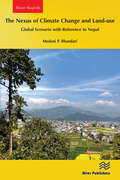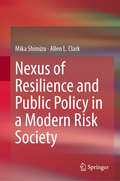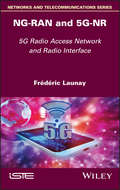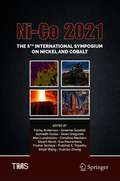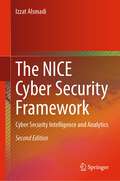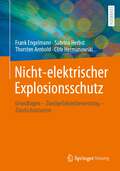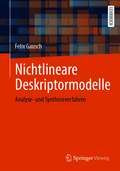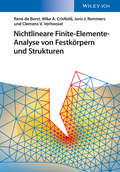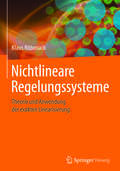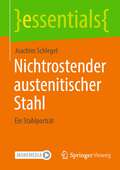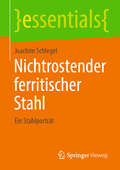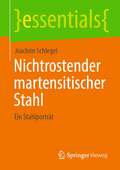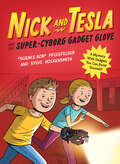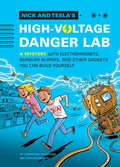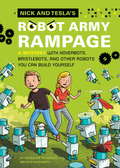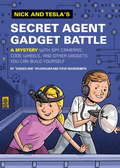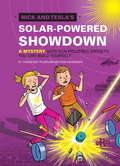- Table View
- List View
The Nexus of Climate Change and Land-use – Global Scenario with Reference to Nepal
by Medani P. BhandariThe interplay between land use and climate change is a crucial aspect of sustainable development, especially in Nepal. This book delves into the intricate connections between land-use and climate change in Nepal, shedding light on significant challenges and potential opportunities. Nepal, with its diverse topography and ecosystems, is exceptionally susceptible to the impacts of climate change. The distinctive land-use patterns, encompassing agriculture, forest cover, and urbanization, significantly influence the country's climate resilience and carbon balance. However, rapid population growth, urban expansion, and changing land-use practices have led to environmental degradation and a surge in greenhouse gas emissions. The alarming deforestation, driven by agricultural expansion, infrastructure development, and unsustainable logging, has contributed to carbon emissions and the depletion of vital ecosystem services. Consequently, the conversion of forested land into agricultural fields has negatively affected biodiversity, soil erosion, and water resources, intensifying the vulnerability of communities to climate change. Nevertheless, embracing sustainable land-use practices like afforestation, reforestation, and agroforestry holds promise for mitigating the impacts of climate change and enhancing resilience. The promotion of climate-smart agriculture, watershed management, and community-based forestry can aid in conserving ecosystems, sequestering carbon, and improving livelihoods. This study illustrates the intricate relationship between land-use and climate change, emphasizing the importance of striking a balance in land-use practices, conserving forests, and biodiversity, and promoting sustainable agriculture. These efforts are indispensable for achieving climate resilience and sustainable development in Nepal. By addressing the nexus between land-use and climate change, Nepal can pave the way towards a more sustainable and climate-resilient future. The purpose of this book is to present the core concepts of this issue, inspire further research, and propose solutions to mitigate the problems caused by human disturbances in the Earth's ecosystem.
Nexus of Resilience and Public Policy in a Modern Risk Society
by Mika Shimizu Allen L. ClarkThis is the first book to articulate resilience-based public policy for a constantly changing, complex, and uncertain risk society. Its primary focus is on operationalizing resilience, i.e., on incorporating elements of resilience in public policy in the context of our modern risk society.While there is a wealth of literature on resilience and disaster risk management, there are few publications that focus on the nexus of resilience and public policy, resulting in gaps between various fields and public policy for resilient societies and disaster risk management. In response, this book integrates the latest theoretical insights on public policy and resilience and the latest practical analyses of case studies such as the Tohoku Disaster (Great East Japan Earthquake) in 2011 and Hurricane Sandy on the North American East Coast in 2012 to provide policy tools for future resilient societies and disaster risk management. The recent disaster cases illustrate that our changing, complex and uncertain risk environment requires far more resilience-based public policy through co-production of knowledge than is normally required for conventional disasters. By linking various fields and public policy, the book articulates a resilience-based public policy, i.e., the incorporation of resilience into various entities by designing and implementing “linkages.” These include national-to-local linkages, linkages between different entities such as scientific communities and decision makers, and linkages between financial, human, and information resources. Thus, the nexus of resilience and public policy presented in this book aims at better public policy to face a changing and complex risk society, together with fundamental uncertainties at regional, national, and local levels around the world.
Nexus of Sustainability: Understanding of FEWSE Systems І (Studies in Systems, Decision and Control #559)
by Artur Zaporozhets Viacheslav Bogdanov Anatoly ZagorodnyThe intricate interplay between food, energy, water, societal dynamics, and the environment constitutes the bedrock of contemporary global challenges. In recent decades, this convergence has emerged as a focal point for scientific inquiry, policy formulation, and societal discourse. This book seeks to meticulously unravel the complexities inherent in this nexus, shedding profound light on the interconnected risks, vulnerabilities, and transformative opportunities that define our quest for sustainability in the twenty-first century. The materials of this book were prepared mainly by authors working on the joint project between the International Institute for Applied Systems Analysis (IIASA) and the National Academy of Sciences (NAS) of Ukraine “Integrated robust modeling and management of food-energy-water-land use nexus for sustainable development”, and on the project “Comprehensive analysis of robust preventive and adaptive measures of food, energy, water, and social management in the context of systemic risks and consequences of COVID-19” (0122U000552) of the NAS of Ukraine. Members of the System Analysis Committee of the NAS of Ukraine were also involved in the preparation of book chapters. The authors dedicate this book to the memory of the Academician of NAS of Ukraine, Professor Yuri Ermoliev, who died in October 2022 and made a fundamental contribution to stochastic optimization as a basic tool for quantitative risk management. This book largely follows his ideas about risk management and its applications.
NF- und HF-Messtechnik: Messen mit Oszilloskopen, Netzwerkanalysatoren und Spektrumanalysator
by Herbert BernsteinDas Buch beschreibt Digital-Oszilloskope, Netzwerk- und Spektrumanalysatoren, die in Forschung, Lehre und Praxis zu den wichtigsten Messgeräten gehören. Diese Messgeräte können von Multisim simuliert werden. Ein großer Vorteil beim Einsatz von Simualtionswerkzeugen ist, dass bei fehlerhaftem Messaufbau und -verfahren und grundsätzlichen Messfehlern weder Messgeräte noch Messobjekte zerstört werden. Neben den mess- und elektrotechnischen Grundlagen werden zahlreiche Messaufgaben beschrieben.
Nfc For Dummies
by Consumer DummiesYour no-nonsense guide to Near Field Communication Are you a newcomer to Near Field Communication and baffled by the scant documentation and online support available for this powerful new technology? You've come to the right place! Written in a friendly and easily accessible manner, NFC For Dummies takes the intimidation out of working with the features of NFC-enabled devices and tells you exactly what it is and what it does-and doesn't do. NFC is revolutionizing the way people interact on a daily basis. It enables big data and cloud-based computing through mobile devices and can be used by anyone with a smartphone or tablet every day! Soon to be as commonplace as using Wi-Fi or the camera on your smartphone, NFC is going to forever change the way we interact with people and the things around us. It simplifies the sending and receiving of information, makes monetary transactions simple and secure-Apple Pay already uses NFC-and is a low-cost product to manufacture and use. As more developers create apps with NFC, you're going to see it used regularly-everywhere from cash registers to your social media accounts to electronic identity systems. Don't get left behind; get up to speed on NFC today! Provides a plain-English overview of NFC Covers the history and technology behind NFC Helps you make sense of IoT and powered chips Explains proximity technologies and non-payment applications Whether you're a developer, investor, or a mobile phone user who is excited about the capabilities of this rapidly growing technology, NFC For Dummies is the reference you'll want to keep close at hand!
NG-RAN and 5G-NR: 5G Radio Access Network and Radio Interface
by Frederic LaunayNG-RAN and 5G-NR describes the deployment of 5G NSA (non standalone 5G) and 5G-SA (standalone 5G). 5G-NSA deals with radio access entities. For the 5G-NSA mode, dual MR DC connectivity is based on radio measurements, allowing the master 4G base station MeNB to add or remove a secondary 5G node SgNB.This book describes the architecture of the NG radio access network and the 5G-NR radio interface according to the 3GPP (3rd Generation Partnership Project) specifications. The overall architecture of the NG-RAN, including the NG, Xn and F1 interfaces and their interaction with the radio interface, are also described. The 5G-NR physical layer is mainly connected by implementing antennas, which improves transmission capacity. 5G-SA deals with the 5G Core network.In the 5G-SA model, the mobile is attached to the 5G Core network through NG-RAN. The book explains radio procedure, from switching on a device to establishing a data connection, and how this connection is maintained even if mobility is involved for both 5G-SA and 5G-NSA deployment. NG-RAN and 5G-NR is devoted to the radio access network, but mobile registration, establishment procedures and re-establishment procedures are also explained.
NGN Architectures, Protocols and Services
by Toni JanevskiComprehensive coverage explaining the correlation and synergy between Next Generation Networks and the existing standardized technologies This book focuses on Next Generation Networks (NGN); in particular, on NGN architectures, protocols and services, including technologies, regulation and business aspects. NGN provides convergence between the traditional telecommunications and the Internet, and it is globally standardized by the ITU (International Telecommunication Union), where ITU is the United Nations specialized agency for Information and Communication Technologies – ICTs. The convergence towards the NGN is based on the Internet technologies, and the introductory chapters cover the Internet fundamentals of today, including architectures, protocols (IPv4, IPv6, TCP, DNS, etc.), Internet services (WWW, e-mail, BitTorrent, Skype, and more), as well as Internet governance. Further, the prerequisite for convergence of all ICT services over single network architectures is broadband access to the Internet. Hence, the book includes architectures of fixed broadband Internet access networks, such as DSL (Digital Subscriber Line) networks, cable networks, FTTH (Fiber To The Home), next generation passive and active optical networks, and metro Ethernet. It also covers network architectures for next generation (4G) mobile and wireless networks (LTE/LTE-Advanced, and Mobile WiMAX 2.0), then Fixed Mobile Convergence - FMC, next generation mobile services, as well as business and regulatory aspects for next generation mobile networks and services. Comprehensive coverage explaining the correlation and synergy between Next Generation Networks and the existing standardized technologies Focuses on Next Generation Networks (NGN) as defined by the ITU, including performance, service architectures and mechanisms, common IMS (IP Multimedia Subsystem), control and signalling protocols used in NGN, security approaches, identity management, NGN Service Overlay Networks, and NGN business models Examines the most important NGN services, including QoS-enabled VoIP, IPTV over NGN, web services in NGN, peer-to-peer services, Ubiquitous Sensor Network (USN) services, VPN services in NGN, Internet of things and web of things Includes the transition towards NGN from the PSTN (Public Switched Telephone Networks) and from the best-effort Internet via the same Internet access Explores advanced topics such as IPv6-based NGN, network virtualization, and future packet based networks, as well as business challenges and opportunities for the NGN evolved networks and services Essential reading for engineers and employees from regulatory bodies, government organisations, telecommunication companies, ICT companies.
Ni-Co 2021: The 5th International Symposium on Nickel and Cobalt (The Minerals, Metals & Materials Series)
by Corby Anderson Graeme Goodall Sumedh Gostu Dean Gregurek Mari Lundström Christina Meskers Stuart Nicol Esa Peuraniemi Fiseha Tesfaye Prabhat K. Tripathy Shijie Wang Yuanbo ZhangIn this volume, operators, engineers, and researchers present information about all aspects of current processing technologies for nickel and cobalt, as well as emerging technologies for both metals. Contributions from industry and academia encompass metallurgical aspects of metals commonly associated with nickel and cobalt, such as copper and platinum group metals (PGMs). Specific focus areas of the collection include, but are not limited to mineral processing, metallurgy of nickel and cobalt ores, battery materials, recycling, recovery of associated byproducts and PGMs, and sulfide and laterite processing.
The NICE Cyber Security Framework: Cyber Security Intelligence and Analytics
by Izzat AlsmadiThis updated textbook is for courses in cyber security education that follow the National Initiative for Cybersecurity Education (NICE) framework which adopts the Competency- Based Education (CBE) method. The book creates content based on the Knowledge, Skills and Abilities (a.k.a. KSAs) described in the NICE framework. This book focuses on cyber analytics and intelligence areas. The book has 18 chapters: Introduction, Acquisition Management, Continuity Planning and Disaster Recovery, Cyber Defense Analysis and Support, Cyber Intelligence, Cyber Intelligence Analysis, Cyber Operational Planning, Cyber Policy and Strategy Management, Cyber Threat Analysis, Cybersecurity Management, Forensics Analysis, Identity Management, Incident Response, Collection Operations, Computer Network Defense, Data Analysis, Threat Analysis and last chapter, Vulnerability Assessment.
The NICE Cyber Security Framework: Cyber Security Management
by Chuck Easttom Izzat Alsmadi Lo’ai TawalbehThis textbook covers security controls and management. It is for courses in cyber security education that follow National Initiative for Cybersecurity Education (NICE) work roles and framework that adopt the Competency-Based Education (CBE) method. The book follows the CBE general framework, meaning each chapter contains three sections, knowledge and questions, and skills/labs for skills and sbilities. The author makes an explicit balance between knowledge and skills material in information security, giving readers immediate applicable skills. The book is divided into several parts, including: Information Assurance / Encryption; Information Systems Security Management; Information Systems / Network Security; Information Technology Management; IT Management; and IT Risk Management.
Nicht-elektrischer Explosionsschutz: Grundlagen – Zündgefahrenbewertung – Zündschutzarten
by Frank Engelmann Sabrina Herbst Thorsten Arnhold Clife HermanowskiDieses Fachbuch stellt zusammenfassend die Grundlagen des nicht-elektrischen Explosionsschutzes dar. Dies sind u. a. Themen wie die grundlegende Definition einer Explosion, die allgemeinen Grundlagen des Explosionsschutzes, die Herausforderungen des nicht-elektrischen Explosionsschutzes, die Zündgefahrenbewertung, die möglichen Maßnahmen zur Vermeidung von wirksamen Zündquellen, Hinweise zur Instandhaltung im Bereich des nicht-elektrischen Explosionsschutzes und der Rechtsrahmen, der zu berücksichtigen ist. Mithilfe des Fachbuchs sollen die Transparenz und die Verständlichkeit speziell für den nicht-elektrischen Explosionsschutz erhöht und seine korrekte Anwendung gefördert werden.
Nichtlineare Deskriptormodelle: Analyse- und Syntheseverfahren
by Felix GauschDieses Buch befasst sich mit der Entwicklung von Analyse- und Syntheseverfahren für nichtlineare Mehrgrößensysteme mit Modellen in Deskriptorform. Mit einem eigens für Deskriptormodelle eingeführten rekursiven Operator lassen sich die entwickelten Analyse- und Syntheseverfahren kompakt darstellen. Die Rolle dieses Operators im Rahmen von Deskriptormodellen entspricht derjenigen der Lie-Ableitung im Zusammenhang mit Zustandsmodellen. Im Anschluss an die Analyse der Strukturen und Eigenschaften von Deskriptormodellen werden die Schwerpunkte auf den Entwurf einer Rückführung zur exakten Linearisierung und Entkopplung des Eingangs-Ausgangsverhaltens, auf den Entwurf von Beobachtern zur Schätzung der Deskriptorvariablen und auf die Realisierbarkeit von verkoppelten Deskriptormodellen gelegt.
Nichtlineare Finite-Elemente-Analyse von Festkörpern und Strukturen
by Joris J. Remmers Clemens V. Verhoosel Mike A. Crisfield René De BorstMit soviel Mathematik wie nötig und so vielen realen Ingenieursproblemen wie möglich ist diese Einführung in die nichtlineare Finite-Elemente-Analyse ein Muss für Studenten und Praktiker des Maschinenbaus.
Nichtlineare Regelungssysteme: Theorie und Anwendung der exakten Linearisierung
by Klaus RöbenackDas Buch behandelt fortgeschrittene Methoden der nichtlinearen Regelungstheorie. Die Darstellung ist einerseits in sich mathematisch schlüssig und nachvollziehbar, andererseits aber auch in einer für Ingenieure verständlichen Sprache formuliert. Die jeweilige Herangehensweise bzw. Entwurfsmethodik wird an verschiedenen Beispielen veranschaulicht bzw. durch den Einsatz des Open-Source-Computeralgebrasystems Maxima illustriert.Die ZielgruppenDas Werk wendet sich an Doktoranden bzw. Ingenieure in der Industrie, die - z.B. im Bereich Automotive oder in der chemischen Industrie – mit der Regelung nichtlinearer Systeme konfrontiert werden. Das Buch richtet sich ebenso an Studierende der Elektrotechnik oder Mechatronik in der Vertiefungsrichtung Automatisierungs- bzw. Regelungstechnik, die bereits über fortgeschrittene regelungstechnische Kenntnisse verfügen.
Nichtrostender austenitischer Stahl: Ein Stahlporträt (essentials)
by Joachim SchlegelDie Welt des Stahls ist erstaunlich vielfältig und so komplex, dass sie in der Praxis nicht leicht zu überblicken ist. In Form von essentials zu Porträts von ausgewählten Stählen und Stahlgruppen soll dem Leser diese Welt des Stahls nähergebracht werden; kompakt, verständlich, informativ, strukturiert mit Beispielen aus der Praxis und geeignet zum Nachschlagen.Die austenitischen Stähle, die bedeutendsten Stähle aus der Gruppe der rost-, säure- und hitzebeständigen Stähle, weisen ein breites Spektrum an Eigenschaften auf. So ist es kein Wunder, dass sie sehr schnell ihren Siegeszug in alle Bereiche der Technik und des privaten Lebens antraten. Neben hohen Anforderungen an die Korrosionsbeständigkeit und an die mechanischen Eigenschaften werden sie auch besonderen hygienischen und ästhetischen Kriterien gerecht. Wissenswertes über diese Stähle fast dieses essential zusammen.
Nichtrostender ferritischer Stahl: Ein Stahlporträt (essentials)
by Joachim SchlegelDas vorliegende essential beschreibt die nicht rostenden ferritischen Stähle, auch Chrom-Edelstähle genannt. Diese besitzen nur einen sehr geringen bzw. gar keinen Nickelgehalt. Sie sind deshalb kostengünstiger als austenitische Stähle. Sie sind magnetisch; können jedoch nicht umwandlungsgehärtet werden. Mit ihrer guten Schweiß- und Kaltumformbarkeit bei mittelmäßiger Korrosionsbeständigkeit, aber hoher Beständigkeit gegen Spannungsrisskorrosion, haben sie sich ein breites Anwendungsgebiet erschlossen.
Nichtrostender martensitischer Stahl: Ein Stahlporträt (essentials)
by Joachim SchlegelDie Welt des Stahls ist erstaunlich vielfältig und so komplex, dass sie in der Praxis nicht leicht zu überblicken ist. In Form von essentials zu Porträts von ausgewählten Stählen und Stahlgruppen soll dem Leser diese Welt des Stahls nähergebracht werden; kompakt, verständlich, informativ, strukturiert mit Beispielen aus der Praxis und geeignet zum Nachschlagen.Die nichtrostenden martensitischen Stähle aus der Gruppe der rost-, säure- und hitzebeständigen Stähle bieten eine ausgezeichnete Kombination aus hoher Festigkeit und Härte bei guter Korrosionsbeständigkeit; und diese Kombination kann durch den Wärmebehandlungsprozess Vergüten den unterschiedlichen Anforderungen bei der Anwendung angepasst werden. Wissenswertes über diese Stähle fast dieses essential zusammen.
Nick and Tesla and the High-Voltage Danger Lab: A Mystery with Gadgets You Can Build Yourself (Nick and Tesla #1)
by Bob Pflugfelder Steve HockensmithSolve mysteries using DIY science projects with twin sleuths Nick and Tesla in this zany, action-packed middle grade adventure by "Science Bob" Pflugfelder!Summer break is about to get weird. After their parents disappear, twins Nick and Tesla are sent to live with their Uncle Newt, an eccentric inventor with his very own science lab. Soon, the young sleuths find themselves investigating a mysterious family right in their own neighborhood. As they race to uncover the truth, Nick and Tesla must build a bottle rocket launcher, a 9-volt battery burglar alarm, and an electromagnet picker-upper to save the day.Now in paperback, the first book in the popular Nick and Tesla series features laugh-out-loud jokes, fun illustrations, and five DIY science projects with step-by-step instructions for readers to try at home.
Nick and Tesla and the Robot Army Rampage: A Mystery with Gadgets You Can Build Yourself (Nick and Tesla #2)
by Bob Pflugfelder Steve HockensmithJoin twins Nick and Tesla as they build homemade robots and race to solve a mystery in this zany, action-packed middle grade adventure sequel by &“Science Bob&” Pflugfelder.It&’s up to Nick and Tesla to save the day–again! When a rash of robberies hits the town of Half Moon Bay, the two young sleuths head straight to their Uncle Newt&’s science lab. They&’ll have to build their very own battlebots, robo-bugs, and hoverbots to outsmart a criminal mastermind. Can Nick and Tesla crack the case before it's too late? Now in paperback, this second book in the popular Nick and Tesla series features laugh-out-loud jokes, fun illustrations, and five DIY science projects with step-by-step instructions for readers to try at home.
Nick and Tesla and the Secret Agent Gadget Battle: A Mystery with Gadgets You Can Build Yourself (Nick and Tesla #3)
by Bob Pflugfelder Steve HockensmithUncover a secret agent and build spy gadgets with twin sleuths Nick and Tesla in this zany, action-packed middle grade adventure by &“Science Bob&” Pflugfelder!After rescuing a kidnapped heiress and taking down a robot army, 11-year-old twins Nick and Tesla could really use a break. But before they can kick back and relax, the young sleuths discover there's a spy in their midst! Someone in the town of Half Moon Bay is spying on their Uncle Newt, an eccentric inventor. To uncover the true identity of this secret agent, Nick and Tesla must build their own spy gadgets, from burglar alarms and code wheels to a water balloon trap and more. Now in paperback, this third book in the popular Nick and Tesla series features laugh-out-loud jokes, fun illustrations, and five DIY science projects with step-by-step instructions for readers to try at home.
Nick and Tesla and the Super-Cyborg Gadget Glove: A Mystery with Gadgets You Can Build Yourself (Nick and Tesla #4)
by Bob Pflugfelder Steve HockensmithBuild a super-cyborg gadget glove and save the science museum with twin sleuths Nick and Tesla in this zany, action-packed middle grade adventure by &“Science Bob&” Pflugfelder!Just like their eccentric genius Uncle Newt, 11-year-old twins Nick and Tesla love science—and they can't wait for the grand reopening of the science museum in Half Moon Bay. But when someone sabotages the new Hall of Genius exhibit, the animatronic replicas of history's greatest scientists go haywire. The two young sleuths must engineer their very own DIY super-cyborg gadget glove—complete with a false-alarm alarm, a UV-light secret message reader, and more—to catch the culprit and save the museum. Now in paperback, this fourth book in the popular Nick and Tesla series features laugh-out-loud jokes, fun illustrations, and four DIY science projects with step-by-step instructions for readers to try at home.
Nick and Tesla's High-Voltage Danger Lab: A Mystery with Electromagnets, Burglar Alarms, and Other Gadgets You Can Build Yourself (Nick and Tesla #1)
by Steve Hockensmith Bob PflugfelderNick and Tesla are bright 11-year-old siblings with a knack for science, electronics, and getting into trouble. When their parents mysteriously vanish, they're sent to live with their Uncle Newt, a brilliant inventor who engineers top-secret gadgets for a classified government agency. It's not long before Nick and Tesla are embarking on adventures of their own--engineering all kinds of outrageous MacGyverish contraptions to save their skin: 9-volt burglar alarms, electromagnets, mobile tracking devices, and more. Readers are invited to join in the fun as each story contains instructions and blueprints for five different projects.In Nick and Tesla's High-Voltage Danger Lab, we meet the characters and learn how to make everything from rocket launchers to soda-powered vehicles. Learning about science has never been so dangerous--or so much fun!
Nick and Tesla's Robot Army Rampage
by Steve Hockensmith Bob PflugfelderNick and Tesla return in an all-new, robot-filled adventure! When a rash of robberies hits the town of Half Moon Bay, 11-year-old sleuths Nick and Tesla are determined to catch the criminals--but to do so, they'll have to build a host of new gadgets and gizmos! In this robot-themed follow-up to Nick and Tesla's High-Voltage Danger Lab, the brother-and-sister duo build four different droids out of ordinary household objects--and illustrated instructions are included throughout the story, so you can build them, too! Make bristlebots that buzz, hoverbots that float above the ground, battlebots that duke it out, and more! Can Nick and Tesla catch the criminal mastermind--and foil his army of rampaging robots--before it's too late?
Nick and Tesla's Secret Agent Gadget Battle
by Steve Hockensmith Bob PflugfelderAfter foiling a gang of kidnappers and fending off an army of robots, 11-year-old siblings Nick and Tesla Holt could use a little rest! But as their third mystery opens, they discover there's a spy in their midst, searching for secrets in the home of their beloved (and slightly crazy) Uncle Newt. Is it the new laboratory assistant? The exterminator? The housekeepers? Or someone completely unexpected? To expose the mystery agent, Nick and Tesla must engineer all kinds of outrageous contraptions, from code wheels and fingerprint powder to spy cameras and burglar detectors. Best of all, instructions are included throughout the story, so you can build the projects, too!
Nick and Tesla's Solar-Powered Showdown: A Mystery with Sun-Powered Gadgets You Can Build Yourself
by Steve Hockensmith Bob PflugfelderKid inventors Nick and Tesla Holt have outsmarted crooks, spies, and kidnappers. Now they have to crack their biggest mystery yet: Where the heck are their parents? To outwit the criminal mastermind who's holding their parents hostage, the twins will need all their brainpower, the help of their eccentric Uncle Newt, and an assortment of homemade solar gadgets. Will the Holt family be reunited at last? Or will a hijacked solar satellite beam down doom from the skies? The adventure includes instructions for creating a solar-powered hot-dog cooker, alarm, secret listening device, and model car, plus a nighttime signal cannon that fires illuminated ping-pong balls.
